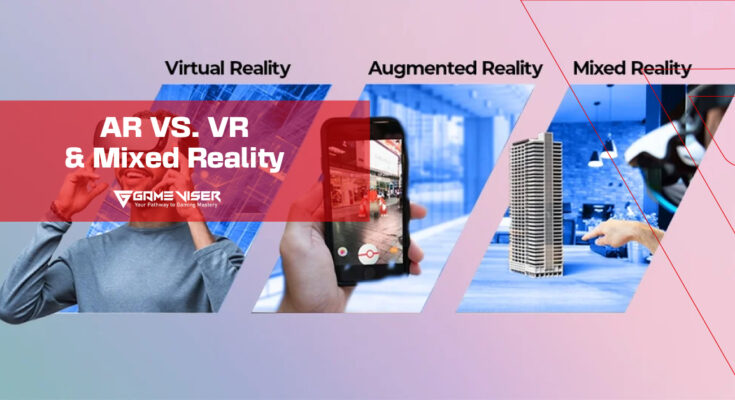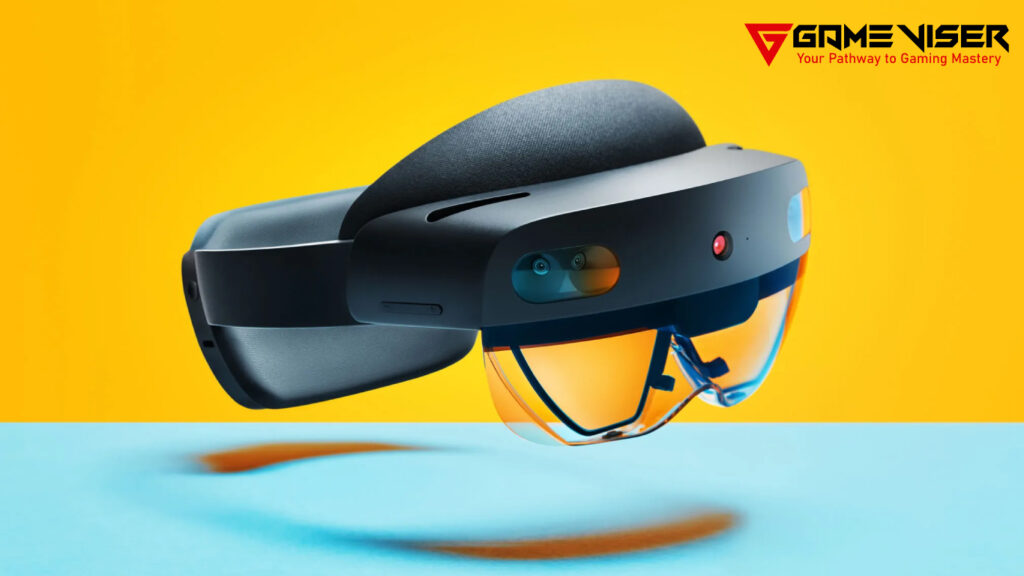Augmented Reality vs. Virtual Reality: Are you curious to learn about the difference between these technologies? AR and VR are rapidly growing technologies. Let’s explore the key differences between these technologies in detail and understand what Mixed Reality is and how they are impacting different industries.
Table of Contents
Introduction
With the passage of time, the landscape of technology is evolving rapidly. There has been unbelievable development in the gaming industry as well. Two such technologies that have revolutionized the gaming industry are Augmented Reality and Virtual Reality. The most important thing to note is that these two technologies have not only transformed the gaming industry but also impacted education, healthcare, and real estate. They have been gaining popularity since their introduction. This article aims to provide a detailed explanation of the topic: Augmented Reality vs. Virtual Reality and a brief explanation of Mixed Reality (MR). Let’s take a look at their unique features and applications of each technology.
What is Augmented Reality (AR)?
Definition
Augmented Reality (AR) is a technology that superimposes digital content such as images, sounds, or other data onto the real world in real time. Unlike VR, AR does not create a new environment but enhances the existing one by adding layers of information or visual elements.
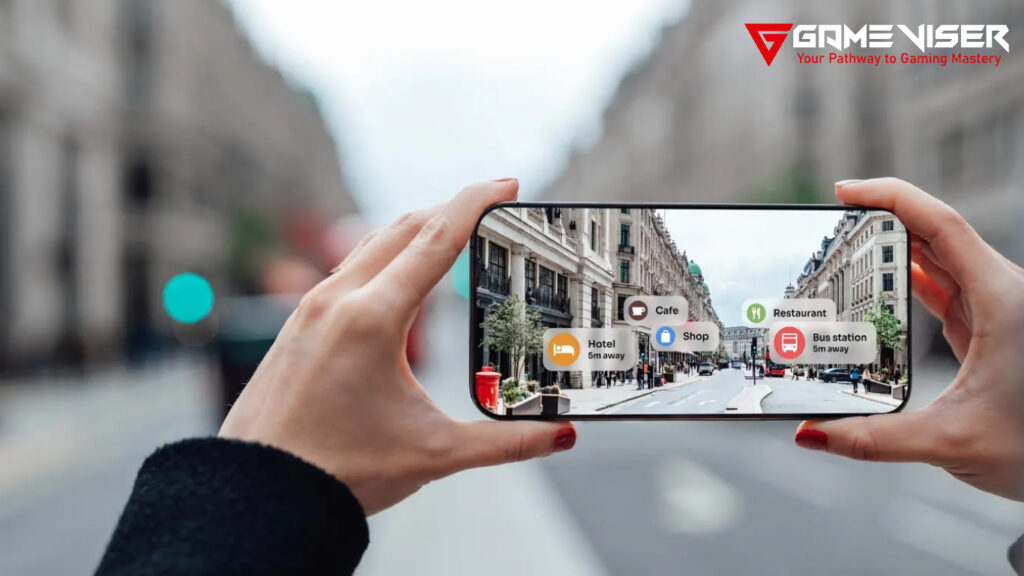
History
Early Foundations (1960s – 1980s):
1968: The concept of Augmented Reality (AR) can be traced back to the late 1960s when computer scientist Ivan Sutherland created the first head-mounted display system, called the “Sword of Damocles.” This device was a fundamental origin of AR, providing simple wireframe graphics that overlaid the user’s view of the real world. However, the technology was bulky and limited in its capabilities.
1970s – 1980s: During these decades, research into computer graphics and virtual reality (VR) advanced. Although AR was not yet a defined field, the groundwork was being laid. Researchers explored the potential of overlaying computer-generated information onto real-world views, but the technology was still in its initial phase.
Emergence of AR Concepts (1990s):
1990: The term “Augmented Reality” was first coined by Tom Caudell, a researcher at Boeing, to describe a digital display system used to assist workers in assembling aircraft by superimposing virtual schematics onto physical parts.
1992: Louis Rosenberg developed one of the first functioning AR systems, called “Virtual Fixtures,” at the U.S. Air Force’s Armstrong Laboratory. This system used robotic arms to overlay sensory information on the real world.
1994: The term “Augmented Reality” gained more prominence when Paul Milgram and Fumio Kishino introduced the “Reality-Virtuality Continuum.”
Commercial and Consumer Applications (2000s):
Early 2000s: AR began to make its way into commercial applications, particularly in the fields of medicine, military, and industrial training. For instance, AR was used to improve surgical procedures by overlaying digital images of organs onto a patient’s body and provides surgeons with critical information in real time.
2008: AR took a significant leap with the introduction of smartphones equipped with GPS, cameras, and accelerometers. These features allowed developers to create AR applications that could be used by the general public. One of the earliest examples was the AR browser “Wikitude,” which allowed users to point their phones at landmarks to see overlaid information about them.
2009: AR gained further popularity with the launch of “Layar,” an AR app that could overlay information on real-world locations using a smartphone’s camera and sensors.
Mainstream Adoption (2010s):
2012: Google introduced “Google Glass,” a wearable AR device in the form of smart glasses. The product faced criticism and ultimately didn’t achieve widespread consumer adoption.
2016: The launch of “Pokémon GO,” an AR-based mobile game, was a great achievement. The game became a global phenomenon, introducing millions of users to AR by allowing them to catch virtual Pokémon in the real world.
2017: Apple and Google released AR development platforms—ARKit and ARCore, respectively—that allowed developers to create AR experiences for iOS and Android devices.
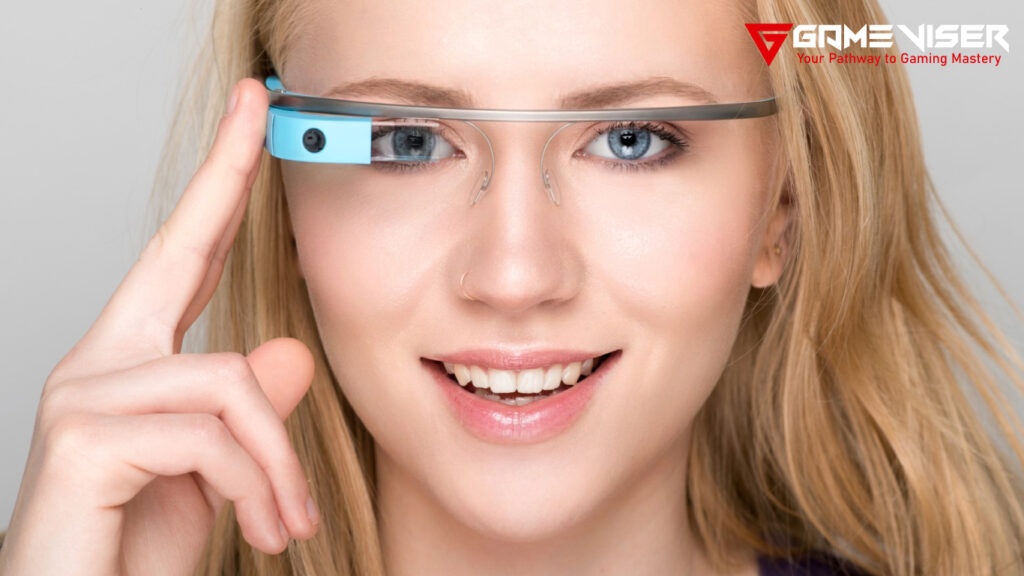
Recent Developments and the Future (2020s):
2020s: There have been advancements in wearable devices like AR glasses, as well as improved software capabilities in smartphones and tablets. Industries such as retail, education, healthcare, and entertainment are increasingly integrating AR into their products and services.
Ongoing Research: Companies like Microsoft (with HoloLens), Magic Leap, and Facebook (now Meta) are taking AR to another level by introducing mixed reality, immersive gaming, remote collaboration, and more.
How Augmented Reality Works?
AR overlays digital data onto the real world through a combination of hardware and software. AR devices include cameras, sensors, and displays that are used to track the environment and project relevant digital content. Popular devices include smartphones, tablets, and AR glasses like Microsoft HoloLens. The technology uses computer vision, depth tracking, and simultaneous localization and mapping (SLAM) to recognize and map real-world objects. Augmented Reality (AR) works by blending digital information with the real world in real time. Here’s a breakdown of how AR works:
Data Input (Sensors and Cameras): AR devices like smartphones or smart glasses use sensors (like GPS, gyroscope, accelerometer) and cameras to capture and interpret the real-world environment. The sensors help the device understand its orientation and position, while the camera provides a live feed of the surroundings.
Processing and Mapping: The AR software processes the input data to understand the environment. It identifies flat surfaces, objects, and spatial boundaries using techniques like computer vision, depth sensing, and simultaneous localization and mapping (SLAM). This helps in accurately placing digital elements on the real-world view.
Rendering and Display: After understanding the environment, the AR software generates digital content (images, 3D models, text, etc.) and overlays it onto the real-world view. The rendered output is then displayed on the screen of a smartphone or AR glasses.
What is Virtual Reality (VR)?
Definition
Virtual Reality (VR) is a technology that creates a completely immersive digital environment by replacing the real world with a simulated one. Users experience this digital world through VR headsets, which block out the real world and display a 3D, interactive virtual environment. Unlike AR, which overlays digital elements onto the real world, VR fully immerses users in a virtual space.
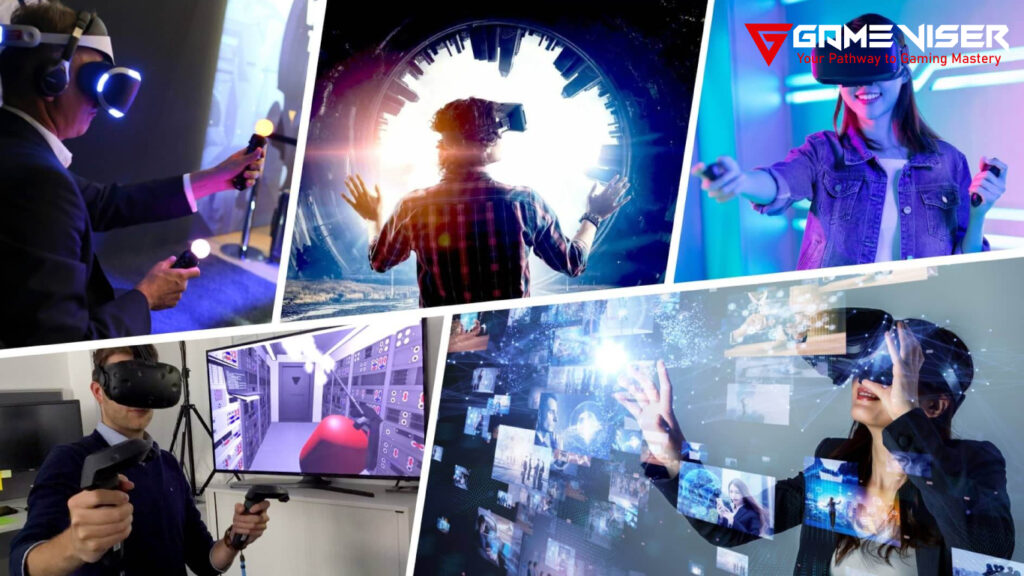
History
Early Foundations (1960s – 1980s):
1965: Ivan Sutherland, known for his work on AR, also laid the foundation for VR with his concept of the “Ultimate Display,” which imagined a fully immersive virtual world indistinguishable from reality.
1968: Sutherland developed the first head-mounted display (HMD), nicknamed the “Sword of Damocles.” It displayed simple 3D graphics and offered basic tracking of head movements.
1987: Jaron Lanier, a pioneer in VR, founded the company VPL Research, which developed some of the first VR headsets and gloves. Lanier is credited with popularizing the term “virtual reality.”
Emergence of VR Concepts (1990s):
1990s: VR began to gain attention in the entertainment and gaming industry. Companies like Sega and Nintendo released early VR gaming systems, but due to technical limitations, these devices were not successful in the consumer market.
1995: Nintendo released the Virtual Boy. However, the device had poor graphics, was uncomfortable, and ultimately failed commercially.
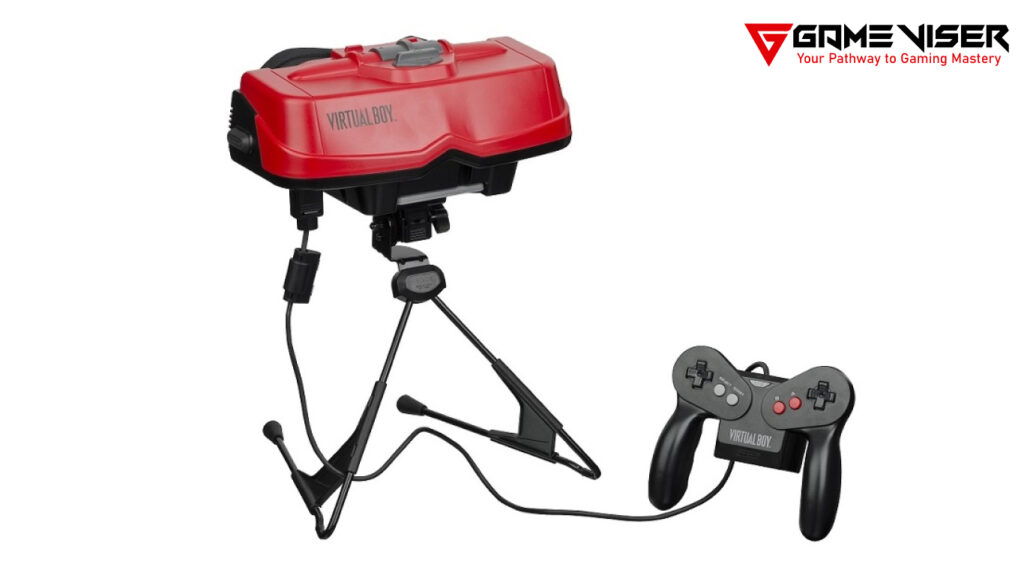
Commercial and Consumer Applications (2000s):
Early 2000s: Advances in computing power and display technology paved the way for more practical VR systems. However, high costs and limited content kept VR largely out of mainstream consumer markets during this time.
2012: Palmer Luckey launched a campaign for the Oculus Rift, a VR headset. This event is widely seen as the start of the modern VR era. Facebook acquired Oculus in 2014, investing heavily in VR development.
Mainstream Adoption and Innovation (2010s):
2016: The year 2016 saw the launch of major VR headsets like the Oculus Rift, HTC Vive, and PlayStation VR. These devices offered more immersive experiences, with improved graphics, head tracking, and interactive controllers.
2018: Standalone VR headsets, like the Oculus Go, were introduced, offering wireless VR experiences without the need for a PC or external sensors. This marked a step toward more portable and user-friendly VR solutions.
Recent Developments and the Future (2020s):
2020s: VR technology continues to improve with more advanced headsets like the Oculus Quest 2, which offers wireless, high-quality VR experiences. VR is expanding beyond gaming into fields like education, healthcare, real estate, and remote collaboration.
Ongoing Research: Companies like Meta (formerly Facebook), Valve, and Sony are investing in next-generation VR systems with better displays, more realistic interactions, and lighter, more comfortable designs. The development of haptic feedback and better motion tracking is also enhancing immersion.
How Virtual Reality Works?
VR works by creating a fully simulated digital environment that users can explore and interact with as if they were physically present. Here’s a simple breakdown of how it works:
Head-Mounted Display (HMD): The core of any VR experience is the VR headset or HMD, which covers the user’s eyes and provides stereoscopic 3D visuals. The display creates a sense of depth by showing slightly different images to each eye.
Motion Tracking: VR systems use sensors to track head and body movements. This allows the virtual environment to adjust as the user moves. Advanced systems also track hand movements using controllers or gloves for precise interactions.
Rendering and Display: The VR software generates the virtual world by rendering the environment in real time as the user moves. High frame rates and low latency are essential to avoid motion sickness and maintain immersion.
Audio and Interaction: High-quality spatial audio is often included to create a realistic sound environment. Users can interact with the virtual world through controllers, hand gestures, or even voice commands.
Key Differences Between AR and VR
| Aspect | Augmented Reality (AR) | Virtual Reality (VR) |
|---|---|---|
| Environment | Enhances the real world by overlaying digital elements | Completely replaces the real world with a virtual environment |
| Interaction | Users interact with digital content within the real world | Users interact with and navigate through a fully virtual space |
| Device Dependency | Requires smartphones, tablets, AR glasses | Requires VR headsets and sometimes controllers for interaction |
| Immersion Level | Limited immersion; real world remains visible | Full immersion; users are isolated from the real world |
| Use Cases | Retail, navigation, gaming, healthcare | Gaming, education, real estate, entertainment |
| Mobility | Generally mobile and portable (smartphones, glasses) | Typically stationary or limited in mobility (tethered to a headset) |
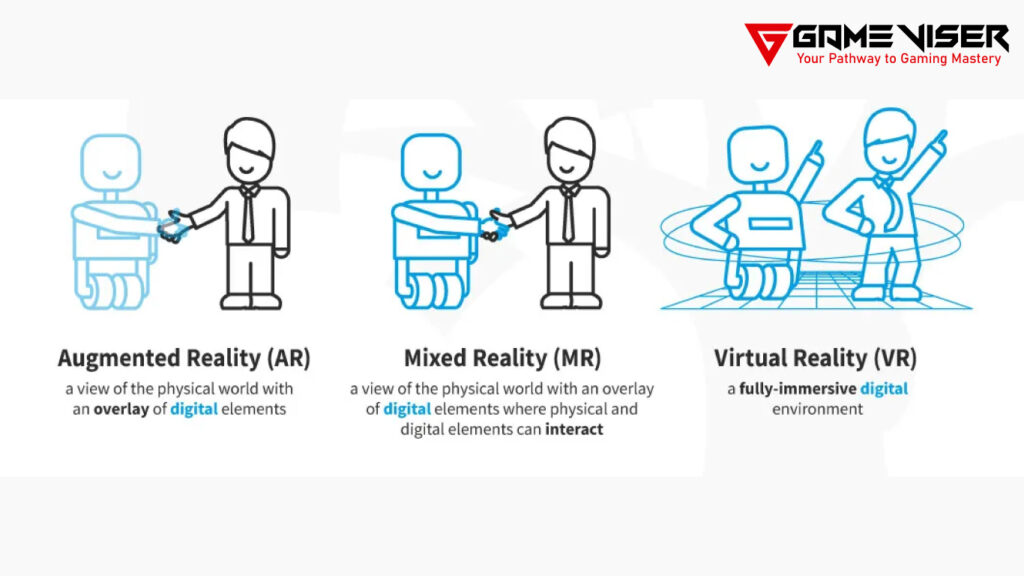
Similarities – Mixed Reality (MR)
Although AR and VR are different technologies, they have some commonalities, particularly in Mixed Reality (MR). MR is a mixture of both technologies. It combines elements of AR and VR and allows digital content to interact with the physical world while allowing users to engage with virtual environments when needed at the same time. An example of MR is Microsoft HoloLens 2, where users can interact with holograms in their surroundings while also experiencing virtual simulations. In professional settings, MR is used for applications like remote assistance, complex data visualization, and training. Let’s see how it works:
Data Input: MR systems use cameras, sensors, and spatial mapping to capture and understand the physical environment. This data helps the system determine where and how to place digital objects.
Processing and Integration: The MR software processes the captured data to create a cohesive digital environment that integrates with the real world. This involves aligning digital content with real-world objects.
Rendering and Display: Digital elements are rendered and displayed through MR devices, such as glasses or headsets. These devices overlay the virtual content onto the real-world view, allowing users to see and interact with both simultaneously.
User Interaction: Users interact with the MR environment through various input methods, such as gestures, voice commands, or physical controllers. The system responds to these inputs and enables users to manipulate and engage with both physical and digital elements.
Augmented Reality VS. Virtual Reality: Which One is Better?
AR is better suited for applications that require blending digital information with the real world. On the other hand, VR excels in immersive experiences such as gaming, virtual tourism, and education. For businesses and developers, choosing between AR and VR depends on the desired level of immersion, the target audience, and the specific goals of the project.
Challenges Facing AR and VR Adoption
Advanced AR and VR devices can be expensive. VR users may experience motion sickness or disorientation during prolonged use. Both technologies collect vast amounts of data and raise concerns about how personal and spatial information is protected. AR is often limited by lighting conditions and device capabilities, while VR faces challenges related to processing power and battery life. However, AI has improved Augmented Reality and Virtual Reality significantly (Read Here).
Future of these Technologies – Extended Reality (XR)
The future of these technologies is bright. As we have discovered earlier, augmented reality and virtual reality have led to the invention of mixed reality (MR). Thus, it is clear that ongoing research on these technologies will bring further fruitful results. These technologies will become common in the near future. Their integration into devices like smartphones and TVs has revolutionized technology and user experiences.
Now, another technology named Extended Reality (XR) is on the way. XR is an umbrella term that encompasses AR, VR, and MR. XR represents the convergence of these technologies. Future XR devices will be more versatile, combining the capabilities of AR and VR into a single, unified experience. This will include headsets and glasses that support both immersive VR experiences and interactive AR applications. The development of advanced XR platforms will enable the creation and management of complex virtual environments, supporting diverse applications across industries. By blending physical and digital realities, XR will influence social dynamics, cultural experiences, and personal interactions. From virtual tourism and digital art to immersive storytelling and interactive entertainment, XR will create new ways for people to experience and engage with the world around them.
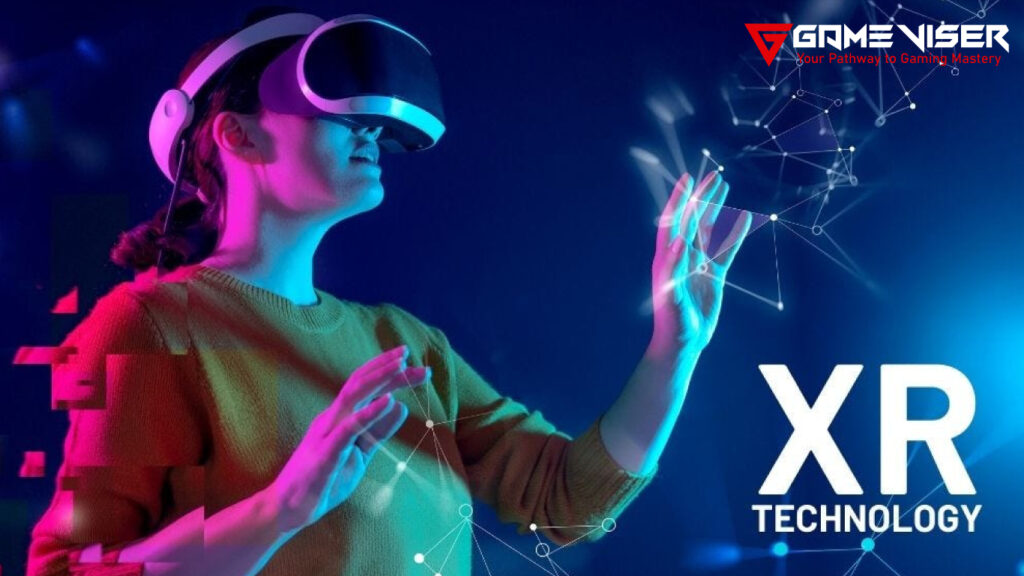
Conclusion
The future of AR, VR, and XR is filled with exciting possibilities. As technology continues to advance, these experiences will become more integrated into our daily lives and will transform how we interact with information, each other, and the world around us. The convergence of AR, VR, and XR will create a rich tapestry of digital and physical experiences.
FAQs
What is the difference between VR, AR, and MR?
VR (Virtual Reality) immerses users in a fully digital environment.
AR (Augmented Reality) overlays digital information onto the real world.
MR (Mixed Reality) combines elements of both VR and AR, allowing digital objects to interact with the real world in real-time.
What is the difference between AR and MR?
AR overlays digital content on top of the real world but does not interact with it.
MR allows for more interactive and realistic integration of digital objects with the real world.
What is AR VR MR XR?
AR (Augmented Reality) adds digital layers to the real world.
VR (Virtual Reality) creates a completely immersive digital environment.
MR (Mixed Reality) blends real and virtual worlds with interactive elements.
XR (Extended Reality) is an umbrella term that includes AR, VR, MR, and any combination of these technologies.
Is Pokemon Go AR or MR?
Pokémon GO is primarily AR (Augmented Reality), as it overlays Pokémon onto the real world through a mobile device.
Is VR the same as AR?
No, VR (Virtual Reality) creates a fully digital environment, while AR (Augmented Reality) adds digital elements to the real world.
What is the difference between VR and AR games?
VR games immerse players in a completely digital environment, while AR games integrate digital elements into the real world.

